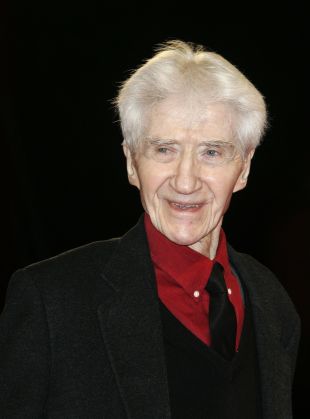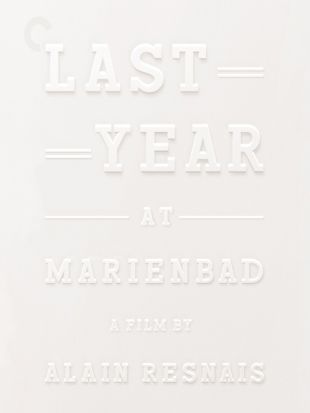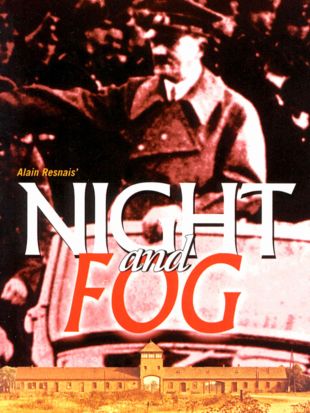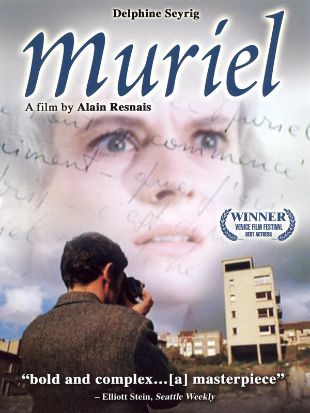While a seminal figure of the French New Wave, Alain Resnais was not, like so many of his contemporaries, an alumnus of the film journal Cahiers du Cinema. In fact, he existed well outside of the sphere of filmmakers like Jean-Luc Godard, Francois Truffaut, and Jacques Rivette, with a dedication to formalism, modernist concerns, and social and political issues not found in the work of his fellow innovators. Focusing repeatedly on themes of time and memory, Resnais drew from the well of serious literature to offer a singular philosophical and artistic vantage point, employing enigmatic narrative structures, lush cinematography, and lyrical editing patterns to create some of the most provocative and controversial work of the period.
Born June 3, 1922, in Vannes, France, Resnais began making his first 8 mm films at the age of 14, later studying drama under the tutelage of Rene Simon. In 1943 he enrolled at the newly formed Institut des Hautes Etudes Cinematographie, leaving the following year after declaring his studies too theoretical. He then spent the mid-'40s working primarily as an actor, signing on with an Allied Occupation performance troupe called Les Arlequins. Resnais returned to filmmaking in 1945, helming the surrealist 16 mm short comedy Schema d'une Identification. The full-length Ouvert pour Cause d'Inventaire followed in 1946, and like its predecessor appears to no longer exist.
Between 1964 and 1967, Resnais directed a string of 16 mm silent films -- known collectively as the "visite" series -- profiling a number of noted artists, among them Lucien Coutard, Felix Labisse, Hans Hartung, Cesar Domela, and Oscar Dominguez. He also helmed La Bague, a mime-drama starring Marcel Marceau, and Journee Naturelle, a study of artist Max Ernst. The 1948 piece Van Gogh proved so successful in its original 16 mm form that it was subsequently remade in 35 mm, winning a prize at the Venice Film Festival as well as an Academy Award. Further art films followed, including 1950's Gauguin, Guernica (a study of the famed Picasso masterwork co-directed by Robert Hessens), and Les Statues Meurent Aussi (a politically charged essay on native art among France's African colonies co-directed by the great Chris Marker).
The early half of the 1950s was largely a fallow period for Resnais. His film work was limited to only two editing projects, Paul Paviot's 1952 effort Saint-Tropez, Devoirs de Vacances and Agnes Varda's 1955 work La Pointe Courte. Finally returning to the field of short films in 1955, he began collaborating with noted literary figures, a trend which continued throughout his career. The first such partnership was with writer Jean Cayrol, with whom Resnais teamed for his 1955 breakthrough Nuit et Brouillard, a brilliant, powerful account of life and death in the Nazi concentration camps. Again, however, a follow-up was slow in forthcoming, as he next edited Nicole Vedres' Aux Frontieres de l'Homme. The 1956 Toute la Memoire du Monde, a short about the Biblioteque Nationale, was next, and in 1958 Resnais worked with writer Raymond Queneau on Le Chant du Styrene, a commissioned work about the manufacturing of polystyrene.
However, the true follow-up to Nuit et Brouillard was 1959's landmark feature Hiroshima Mon Amour. Written by novelist Marguerite Duras and photographed by Sacha Vierny (also a mainstay of the director's later work), it brilliantly fused the past with the present and poetic imagery with stark documentary footage to arrive at an alchemical kind of filmmaking without obvious precedent. The picture launched Resnais to the front lines of the New Wave, alongside Godard and Truffaut, and was a major critical and commercial success the world over. In 1961, he returned with L'Année Derniere a Marienbad, another unqualified masterpiece even more radically experimental than its predecessor. Penned by Alain Robbe-Grillet, it was less a film than a beautifully composed riddle, one which pushed the formal boundaries of filmmaking while proving to be a surprising commercial success as well.
With 1963's Muriel ou le Temps d'un Retour, Resnais left behind the stylistic flourishes of his previous work, focusing instead on a more subtle and emotional kind of storytelling. La Guerre est Finie followed in 1966 and marked his return to experimental narratives by means of a series of foreboding flash-forwards, a technique Resnais described as the "future conditional" tense of filmmaking. When 1969's Je t'aime, Je t'aime proved a financial disaster, he disappeared from sight for half a decade, resurfacing only in 1974 with Stavisky. Resnais next made 1977's Providence, his first English-language feature. Upon returning to France, he helmed 1980's playful Mon Oncle d'Amerique, the first unqualified hit of his career. La Vie Est un Roman followed in 1982, with Amour à Mort on its heels in 1984. In 1986, Resnais filmed the ambitious Mélo, an adaptation of a 1929 melodrama by a forgotten playwright named Henry Bernstein. The 1989 I Want to Go Home closed out the decade, and in 1993 he won a number of French Cesar awards for the two-part, five-hour Smoking/No Smoking, based on Alan Aykbourn's stage cycle Intimate Exchanges. The director's tribute to the legendary TV writer Dennis Potter, On Connaît la Chanson, followed in 1997.
Resnais continued to release films in the 2000s; his final film, Aimer, boire et chanter (Life of Riley), premiered at the 2014 Berlin International Film Festival only weeks before Resnais passed away, at age 91.



